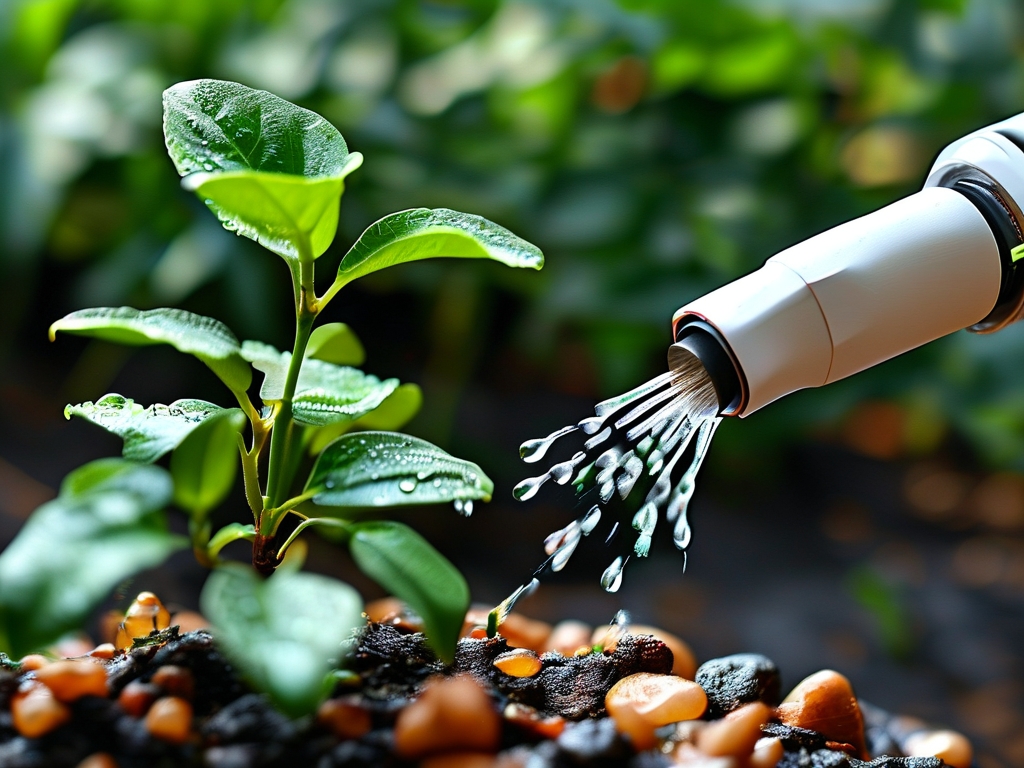The integration of robotics into gardening has transformed traditional plant care, with automated irrigation systems emerging as a groundbreaking innovation. These robots leverage advanced technologies to optimize water usage, enhance plant health, and reduce human intervention. This article explores the underlying principles of robotic flower-watering systems, their key components, and their impact on modern horticulture.

Core Principles of Robotic Flower-Watering Systems
At the heart of robotic irrigation technology lies a combination of sensor-based monitoring and precision control mechanisms. These systems use sensors to collect real-time data on soil moisture, ambient temperature, humidity, and light intensity. By analyzing this information, the robot determines the optimal watering schedule and volume for each plant. Machine learning algorithms further refine these decisions over time, adapting to seasonal changes or specific plant requirements.
For example, capacitive soil moisture sensors embedded in the robot’s probes measure the dielectric constant of the soil, which correlates directly with water content. If the moisture level falls below a predefined threshold—say, 30% for a potted orchid—the system triggers a targeted watering cycle. This data-driven approach prevents overwatering, a common issue in manual gardening that can lead to root rot or fungal growth.
Key Components and Workflow
A typical robotic irrigation system comprises four main modules:
- Sensory Input Unit: Equipped with multispectral cameras, infrared sensors, and hygrometers, this unit scans the environment to assess plant health and hydration needs.
- Decision-Making Module: A microcontroller processes sensor data using predefined rules or AI models. For instance, a simple conditional statement might govern basic systems:
if soil_moisture < optimal_level: activate_water_pump(duration=calculate_water_time(plant_type))
- Actuation System: Motorized pumps, retractable nozzles, and adjustable spray heads deliver water with millimeter precision. Some models incorporate robotic arms to navigate complex plant arrangements.
- Energy and Resource Management: Solar panels or rechargeable batteries power the unit, while internal reservoirs or connected plumbing supply water.
The workflow begins with the robot patrolling a predefined area—either via wheeled mobility or stationary pivots—while continuously gathering environmental data. Upon detecting a plant in need, it positions its nozzles and administers the exact amount of water required. Post-watering, the system updates its logs and prepares for the next cycle.
Advantages Over Traditional Methods
Robotic irrigation addresses several limitations of conventional watering practices. Unlike manual methods, which rely on guesswork, these systems apply water only when and where it’s needed, conserving up to 50% of water usage. They also eliminate human error, such as uneven distribution or missed watering sessions. For commercial greenhouses, this precision translates to higher crop yields and reduced operational costs.
Moreover, these robots excel in challenging environments. In vertical farms with tiered planters, they use articulated arms to reach elevated sections. In arid regions, they adjust watering schedules based on predictive weather data fetched from cloud APIs. A case study involving a smart garden in Arizona demonstrated a 40% reduction in water consumption after deploying autonomous irrigation bots.
Challenges and Future Directions
Despite their benefits, robotic watering systems face hurdles. Sensor accuracy can degrade in highly saline soils, and initial setup costs remain prohibitive for small-scale users. Additionally, programming robots to recognize diverse plant species—each with unique hydration needs—requires extensive botanical datasets.
Future iterations aim to integrate computer vision for leaf health analysis and swarm robotics for large-area coordination. Researchers are also exploring biodegradable components to minimize environmental impact. As IoT connectivity improves, expect these systems to sync seamlessly with smart home ecosystems, allowing users to monitor gardens via mobile apps.
Robotic flower-watering technology represents a fusion of agronomy, robotics, and data science. By automating irrigation, these systems not only conserve resources but also empower gardeners to achieve unprecedented precision in plant care. As the technology matures, it will likely become a staple in both household gardens and industrial agriculture, redefining our relationship with nature through intelligent automation.

